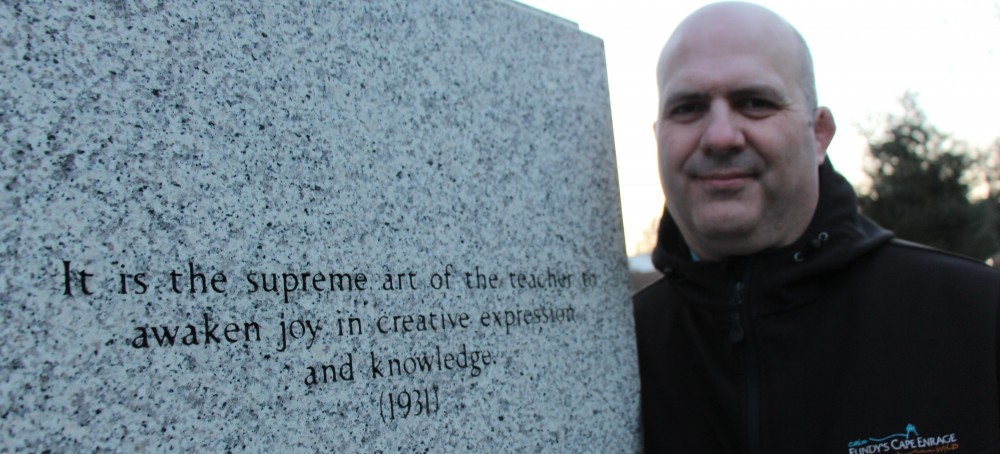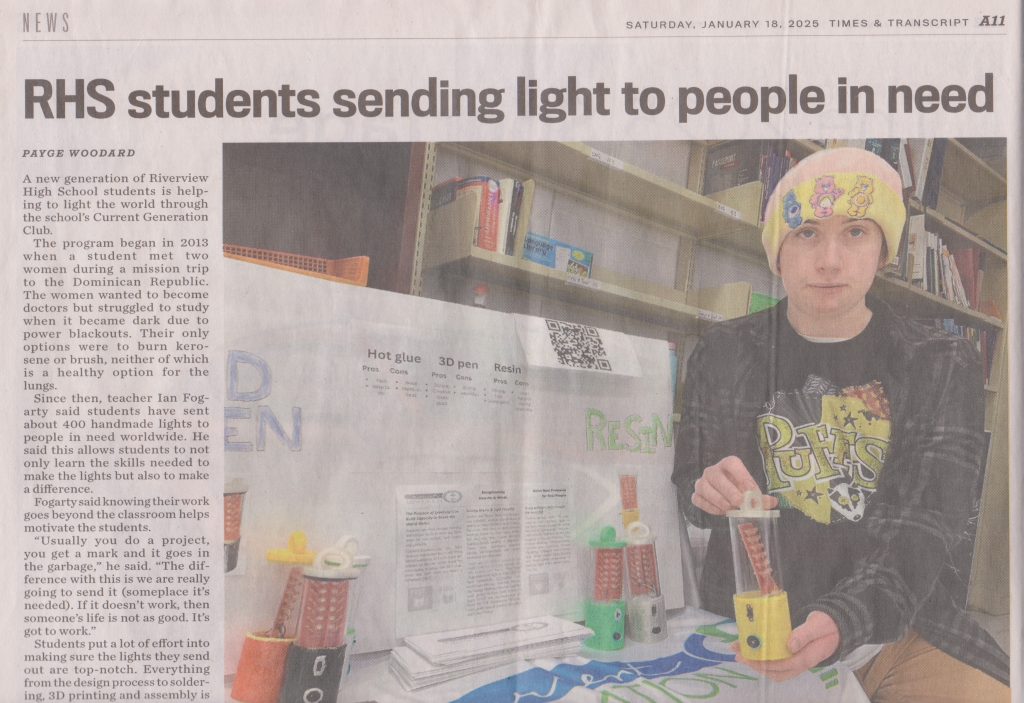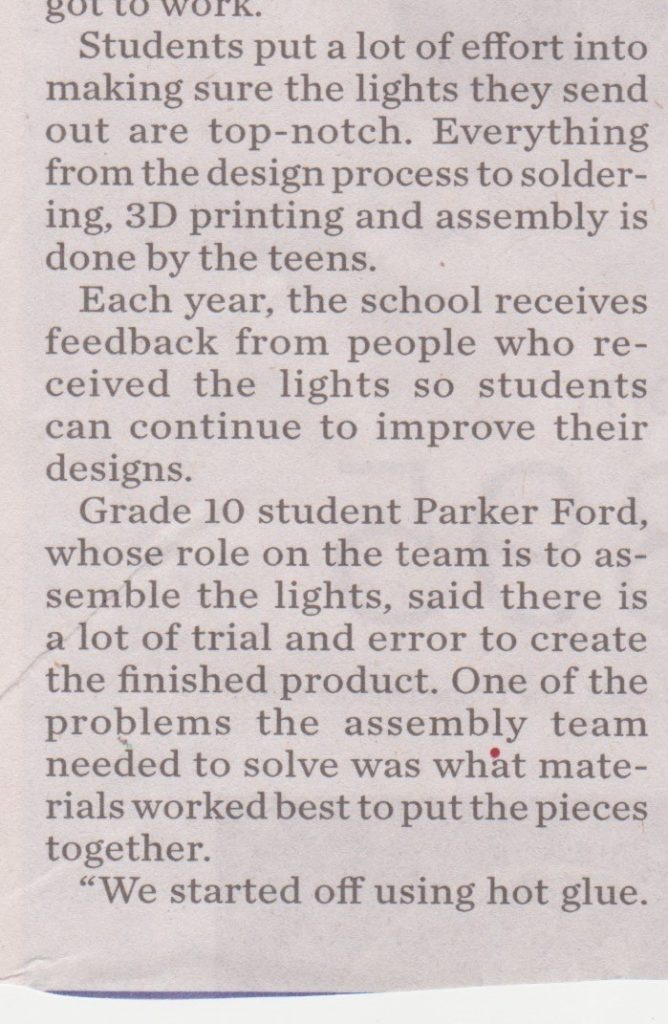Saddened by the news that Jane Goodall has passed. She was a source of inspiration for people to take action around the world, particularly youth. For me personally, she inspired a small group of high school young women doing Current Generation, that their actions can have a tangible impact on another human. This helped direct the student paths to careers that make an impact using STEM. Jane shifted the misconception often held by our students that a single person cannot do much on their own. Before our brief work with Jane, our students believed that NB students could not do anything globally worthy. But that changed at a Fundraiser for Take Action Global in the Palace in Brussels. At the gala, there was a video of school kids that included Jane’s own grandson, and RHS had the lion’s share playing time. Imagine the pride and the change in trajectory in our students when Jane received our lights (at minute 1:30) made by Current Generation students as a birthday present just a couple years ago.
Author Archives: admin
Current Generation featured at RHS Science Fair
Matter-AntiMatter Art Sculpture
Allyson took some ideas from the Philip Beasley Studio and the Living Architecture Systems Group (LASG) who have been mentoring the LEO project. Thanks to the Gorbets at the LASG, she connected with Gabriel who is doing graduate work in particle physics. This was an opportunity to explore the cutting edge of chemistry and physics as subject matter for an art sculpture while also practicing electrical and mechanical engineering in the creative process. Her personal interest course gave her time in her day in addition to the significant hours outside of class to discover who she wanted to be.
When she was younger, she believed that as a girl, the whole of STEM universe was at her feet. In her grade 11 year, she had significant anxiety about attending engineering school despite believing she had an engineering soul. This project was designed to help her know with confidence where she wanted to go.

Next semester, she will be working with younger students to help build their confidence and competence.
Current Gen makes the Mount Allison Record
Current Generation was featured in the Mount Allison Alumni Record. Canada’s #1 Undergraduate University has so many fantastic alumni and somehow they celebrated the work of Current Generation for how it is changing the lives of local students, building people who are confident and competent with an entrepreneurial spirit to create change.
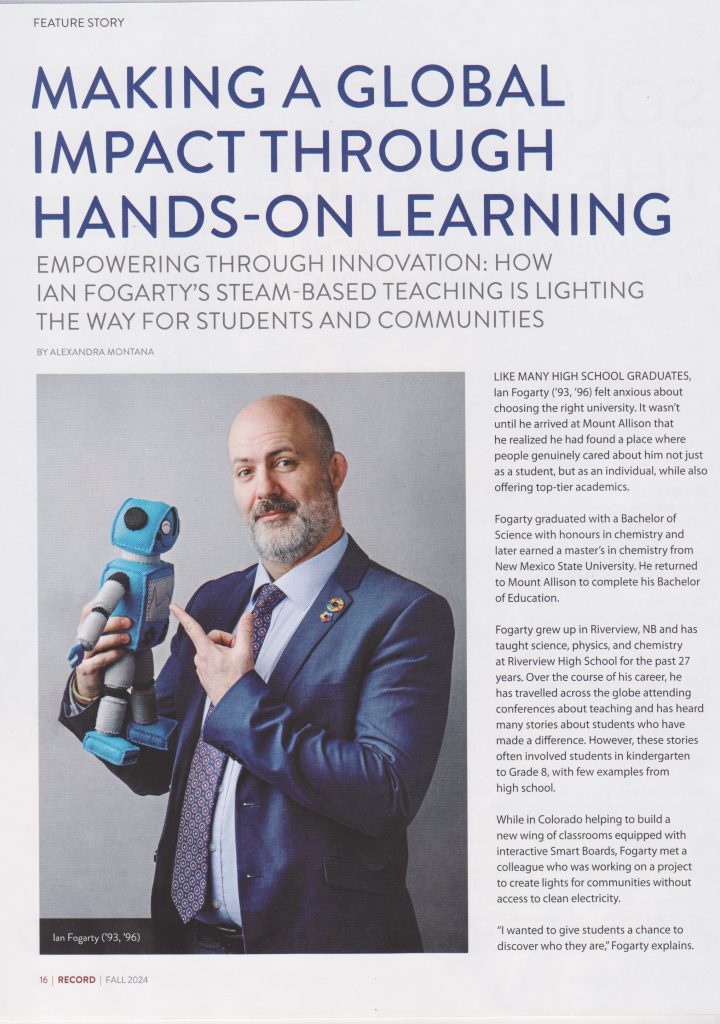

Recruiting new students
I have the son of one of my high school team mates in my homeroom. He is not very interested in school, is very capable but prefers to work on his dad’s construction site. Trying to give him a larger buffet of experiences, I invited him to rebuild the microsphere. He rebuilt it without needing a map. He could visualize the pattern and liked working with his hands. I am hoping to build on this success and see if he will do some soldering.
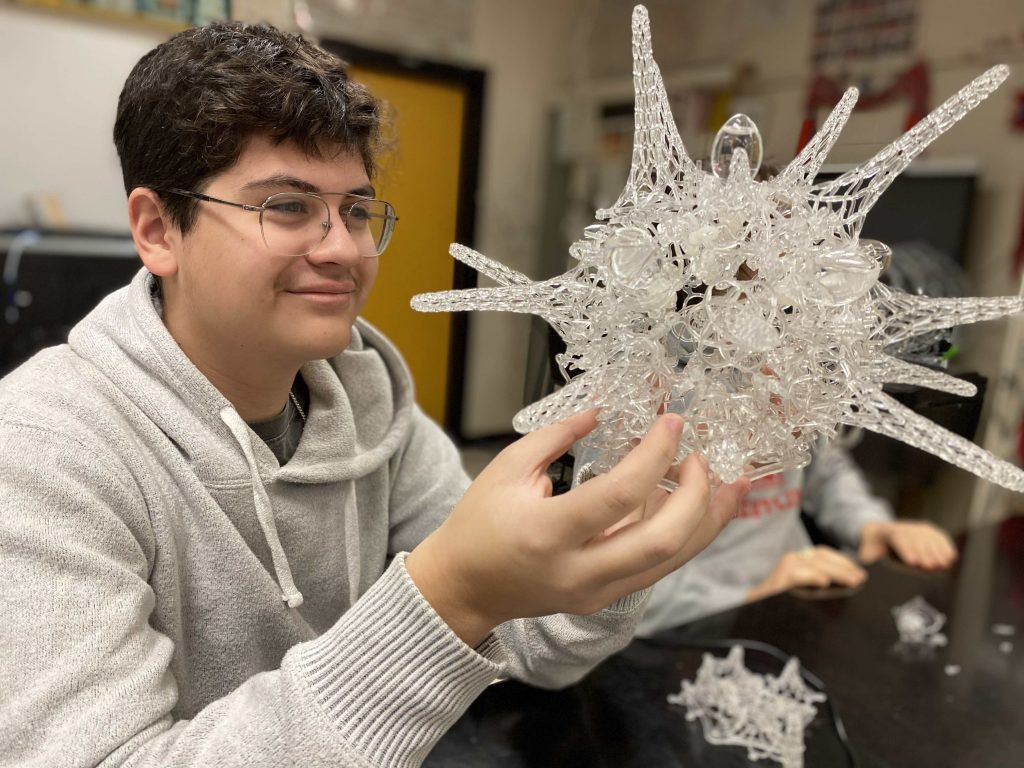
Christmas Workshops

Twice during these holidays, 6 high school students and 2 university students came in for 4 hours each to work on their projects. It was amazing to have the physics lab abuzz with work. There were no distractions, no bells, no requests to go to the bathroom, no cell phones. Just some good classic rock and lots of creativity. All were surprised at how fast the time went. They were in a state of Flow. It was fun enough that they asked to do it again!!!
Having university students mentor the high school kids not only provided confidence that the high school kids were ready for what comes, but they also provided an area of expertise that I did not.
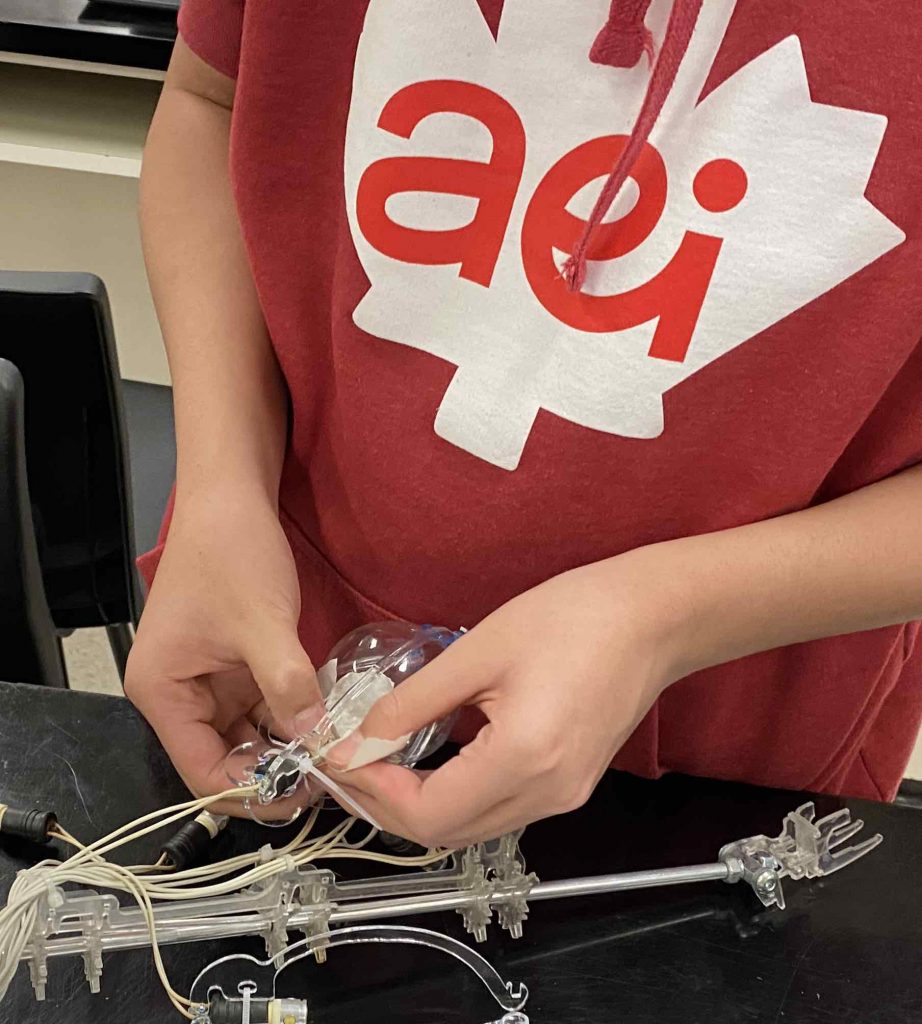
Cycling for student futures
I have a number of science 10 students who need to do course selections that will direct their whole futures in just a few months. They say that they do not need math or science 10 because they are going to do trades. The fastest mental math people I know are construction workers and plumbers.
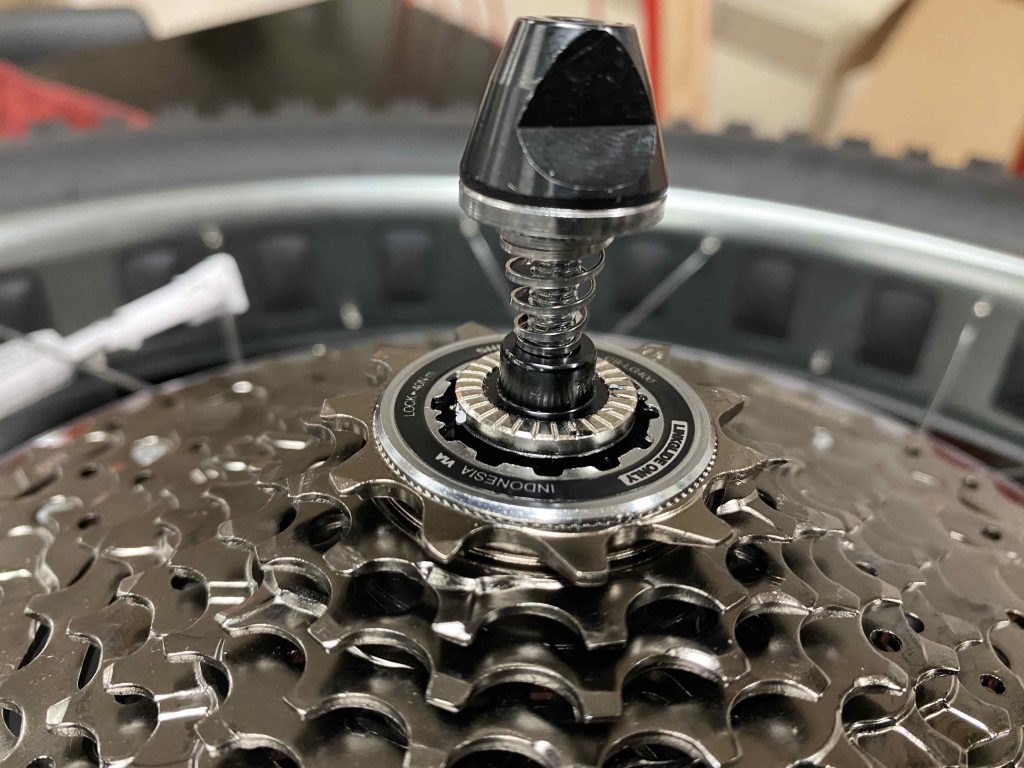
When asked if they have ever done anything like trades before, they say no. So they are deciding the futures having never built anything, never held a wrench or a hammer. They need a project to help them legitimately pass my sci 10 class, but more importantly help them discover things about themselves to better inform their upcoming decisions.
Thanks to Anglophone East giving us a $500 sustainability grant and Desjardin giving us a $2800 grant, we were able to purchase two bikes. Thank you for 4 other local bike shops for submitting proposals. Explore Velo had the best proposal. The bikes arrived and over the holidays, I spent days disassembling perfectly good and tuned up bikes right down to the frame.

Starting next week, these same students will get to practice using a wrench and reading directions, and research youtube videos to assemble the bikes. Fingers crossed.
Cycling for Sustainable Society
After a very successful 2 year secondment to Brilliant Labs, I am back in the classroom. Now I am teaching Science 10- Science for a Sustainable Society. The topics are around chemistry, circuits and power generation. I wanted students to make a tangible difference in their lives, to live a more sustainable life rather than just do a project and write a test. Of course, you should never follow someone who is not willing to go first.
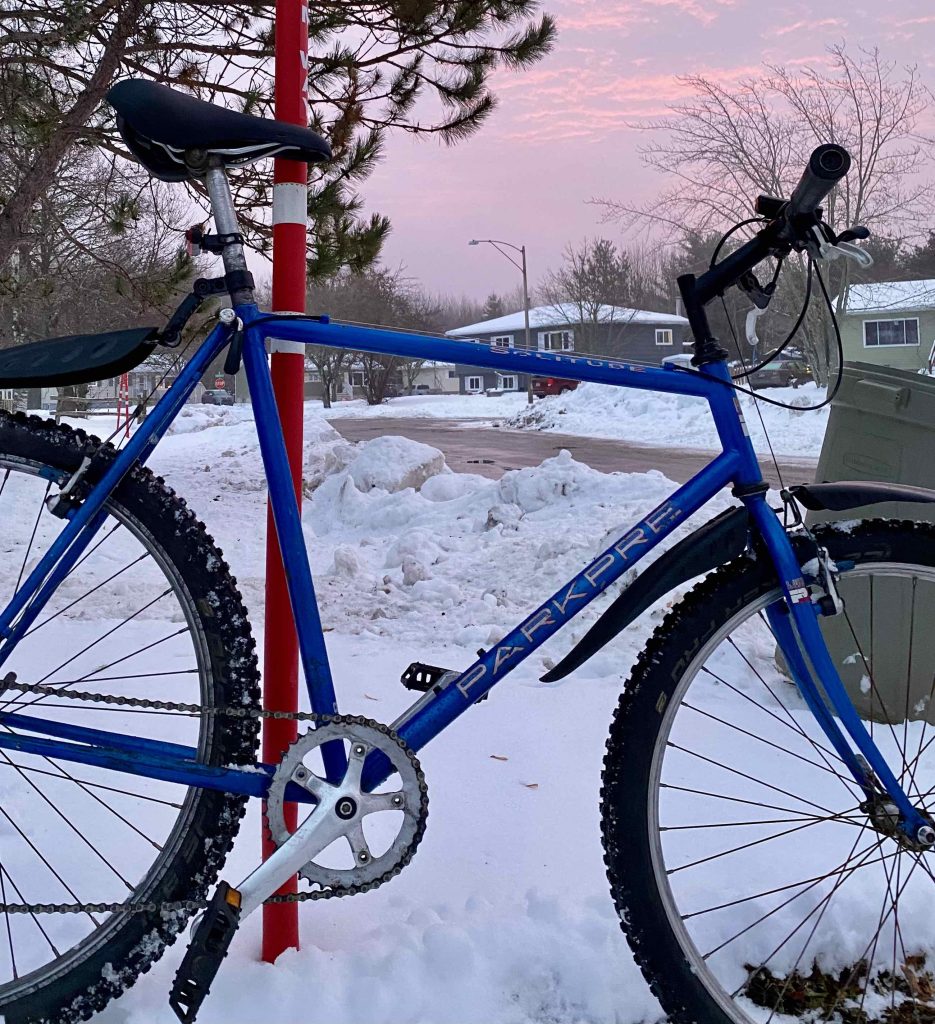
I promised both classes that I would cycle to school every day that it was safe. I have tried to make this school year resolution for the past 3 years and only lasted 2 weeks. Not only did I tell students, but I also told parents. I am committed now.
La Bikery helped me reduce, reuse and recycle my 1990’s mountain bike from my New Mexico desert days. Other than cables, chain and rear cassette, we were able to update from the original parts to a 1×7 format.
So far, it has been 100%, even on the day that it rain so hard the puddles were over my axles. In order to show the students that I am doing it, I put the bike in my classroom. When the snow gets deeper, it will become too messy to store the bike there.
There is an interesting experiment happening. When I get my bike out of the cold shed in the morning, I max out at 5th or 6th gear and it is much more of a workout. However, when I ride home, I take the bike from the nice heated school and I easily travel in the 7th gear. It has been -10oC and 20 cm of snow. We will see what happens when it gets really cold!
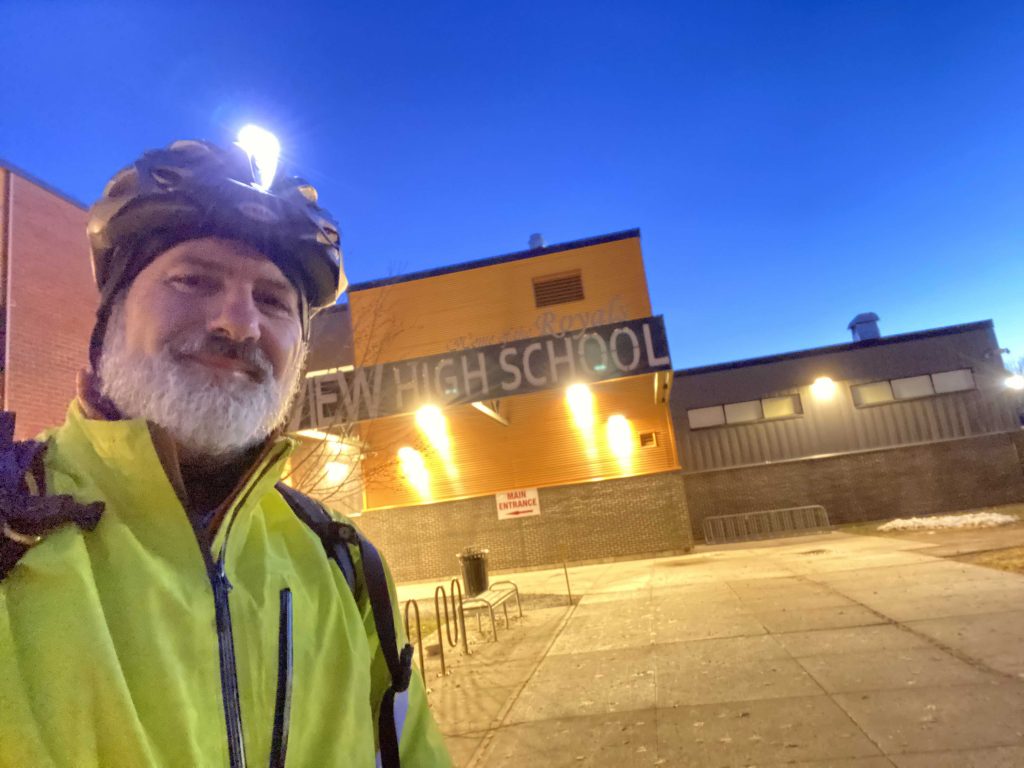
Generations planting seeds
My earliest memories of me and my Dad were driving in an old Dodge Dark, listening to “hit the road Jack, don’t ya come back no more no more”. We went out to a garden plot where he would make a golden rod bow and arrow and he would garden.
When we lived in a house, we had a backyard garden, which I helped in when I had to. Other than the carrots that you could eat with still a bit of dirt on it and the peas right out of the pods, I did not like much of what came out of the garden. I did not inherit his green thumb.
Now that I will be coaching teachers on hydroponics, I guess I better get some wisdom from the experienced. Dad came into the school. It was not the way he left it! So much tech. Despite all the high tech, learning how to germinate seeds goes back a long time and perhaps the most complex machine in these little seeds. We set up 3 or 4 pods of different seeds just to see what happens.
Ideally, we would get good enough at this that we could have these along the hall and students could pick their lunch!! We will see.
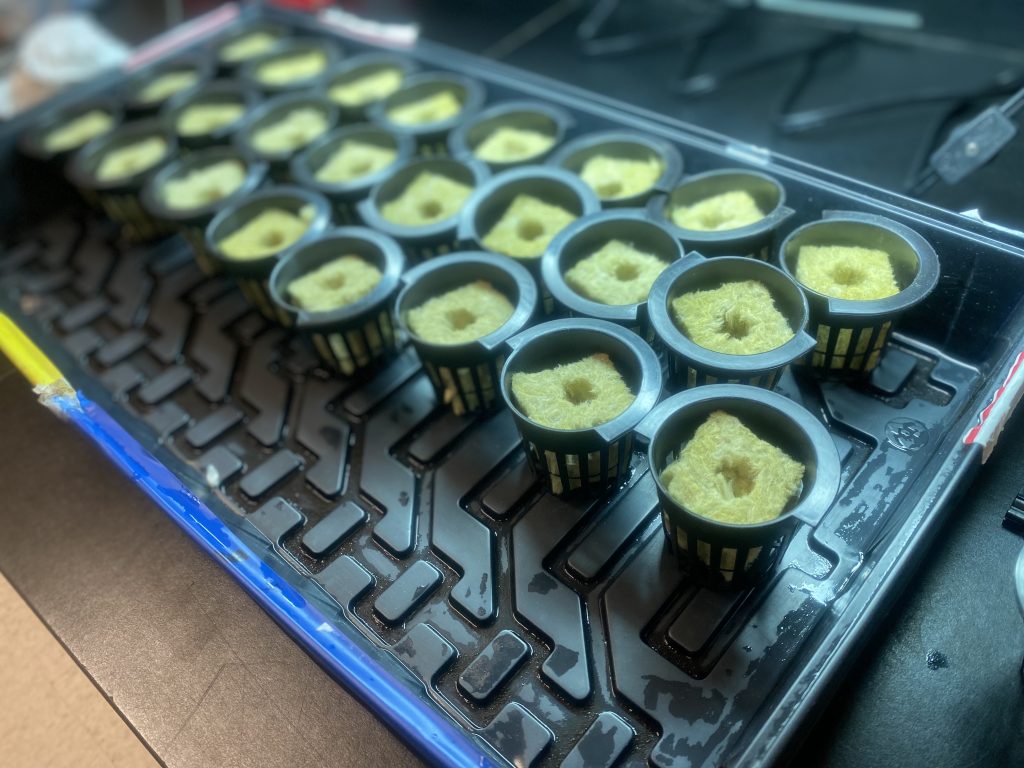
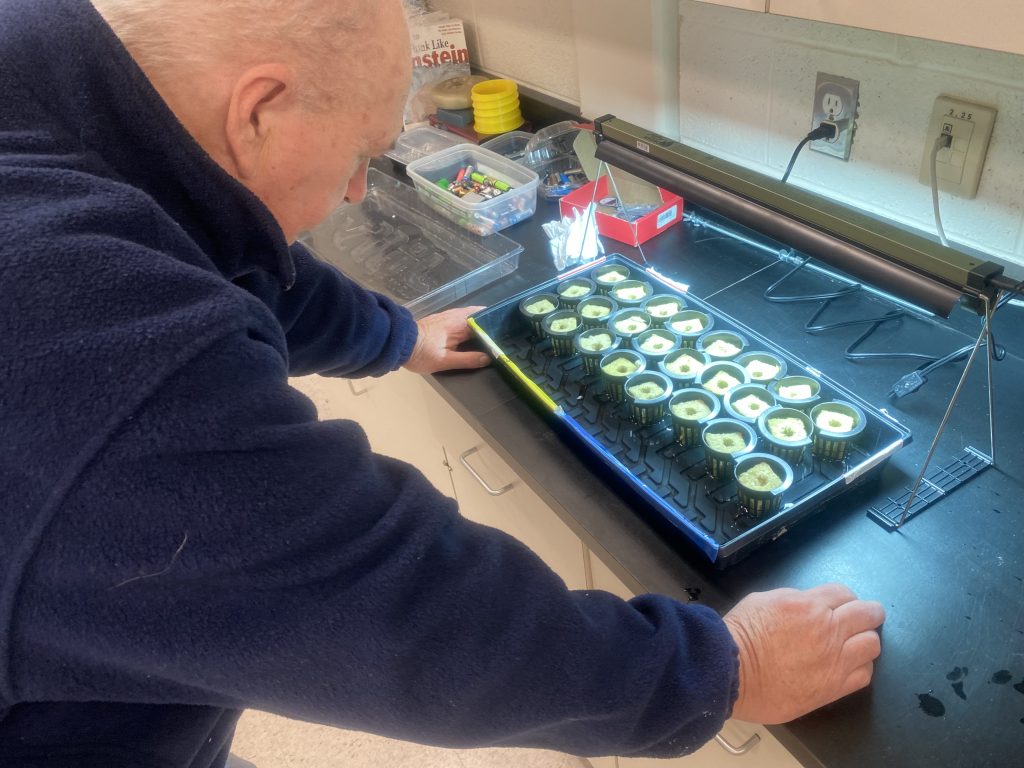
It has been a week and a half. Some are well on their way.
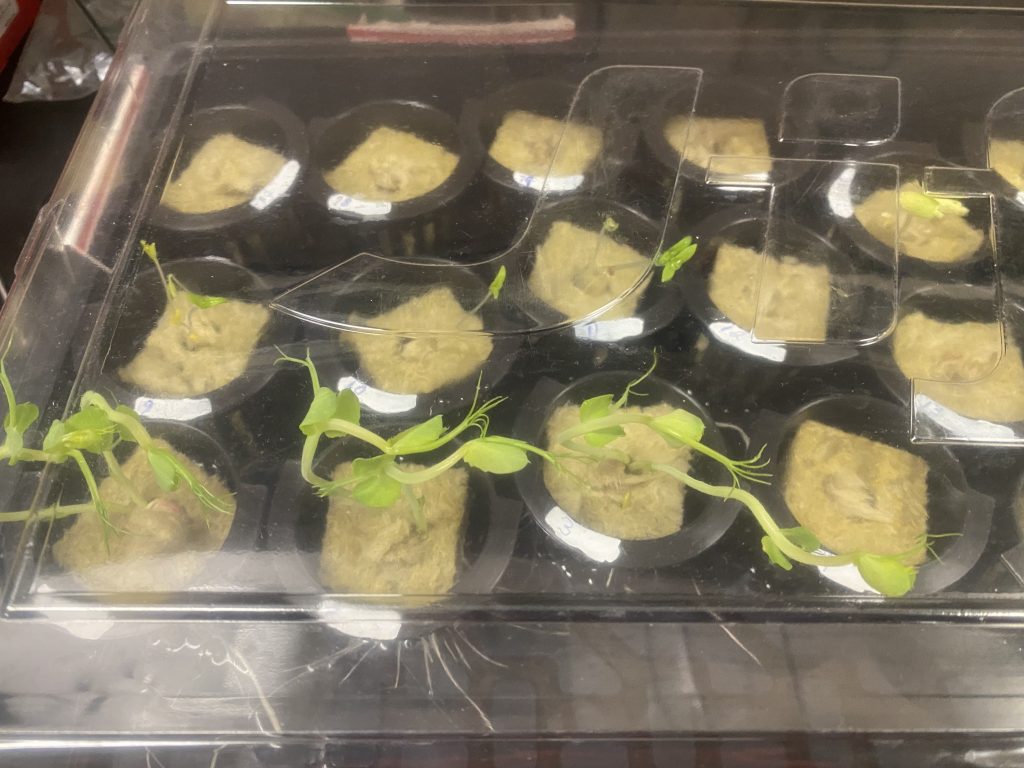
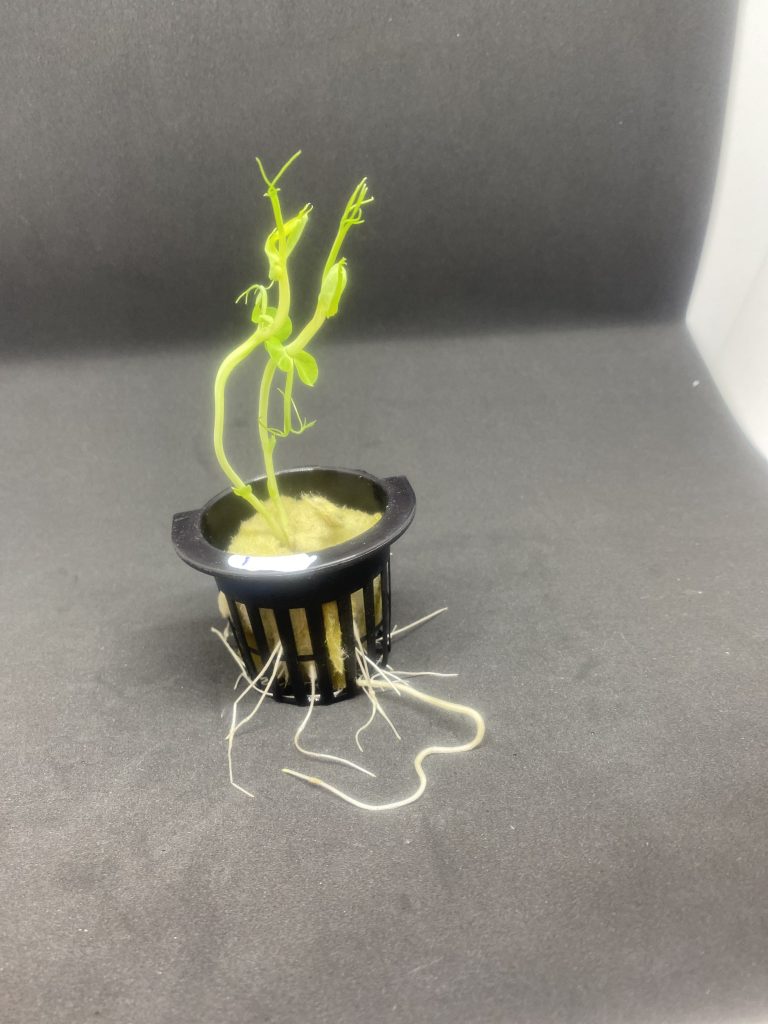
First Coding with Brilliant Labs
There seems to be lots of demand for hydroponics kinds of things and a desire to help automate them. I have never really coded anything before. “But Mr Fogarty, your projects have lots of coding in them!” My response is,” I have students who learn to code.” My job is not to do the thing, but to create opportunities and make things happen. I should know lots of things, but not everything.
But now I am going to be the one people are looking to. I better start to learn!!
After a 12 hour day, another 12 hour day, a 14 hour day and a 12 hour day (what a start!), I might have something. I felt like I did in grad school. Let me try this one last thing and then I’ll go home. What about this one last thing… It is addictive!!!
I finally have a code to turn the lights on and off.

The big problem is that people forget the towers and the pumps run low and break. So I wanted to use a float switch as an automatic emergency shutoff. After almost 87 tries, I think I finally have it, thanks to help from Josh Keys, who did to me what I praise him for doing with students. Gives a little hint, asks questions, provides a bit of background every once in a while. Frustrating!! and what a sense of pride when you get it!!
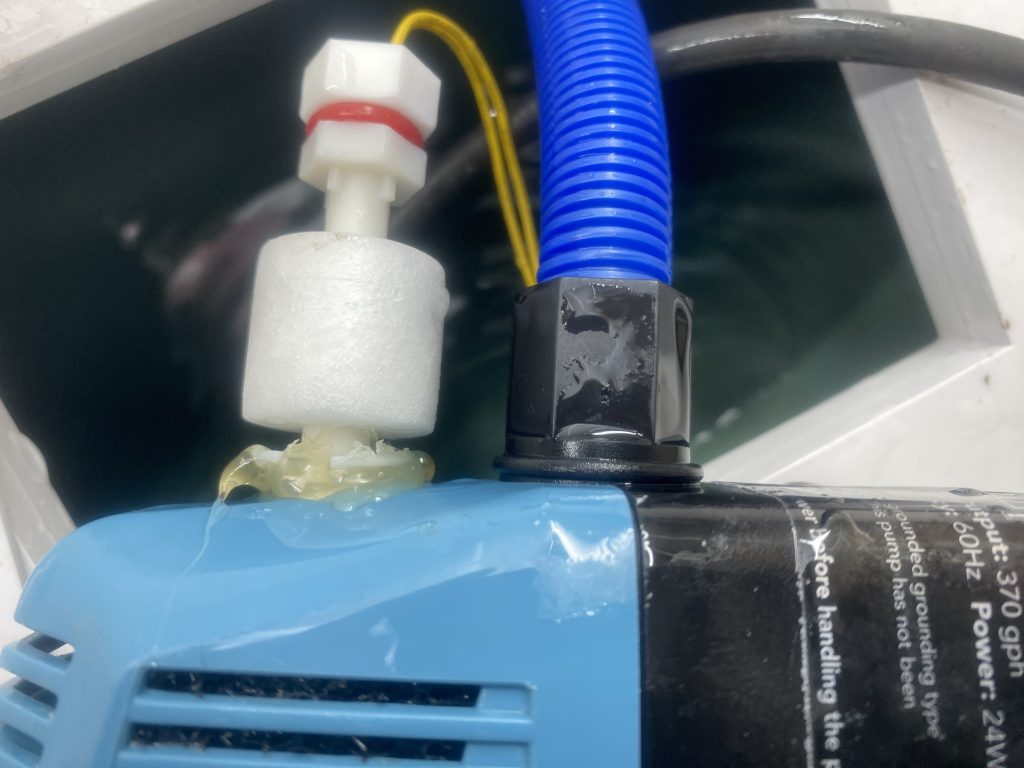
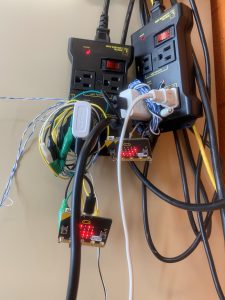
Then he sends me a description of a state machine. I am tired and so I will put that learning off for another time. I feel like my sons felt when we build the shed. I needed to learn if the boys were trades kids or not. So we built a shed. At first I handed them a hand saw, then I brought out a skill saw. The next day we used a hand drill for hours, then we used an electric drill. Everyday was the same.. a bubble level and plumb line, then a laser. It was a great learning experience, but frustrating. While you are learning, it is about the process less about the product. Josh made me feel similarly. But I have a code that works. When I learn State machines, I am sure it will be better.
